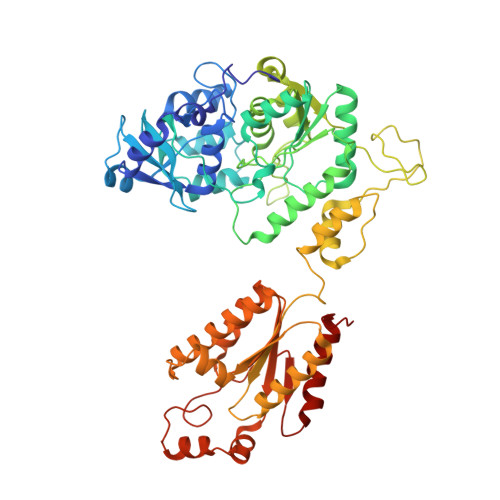Allosteric Inhibition via R-State Destabilization in ATP Sulfurylase from Penicillium chrysogenum
MacRae, I.J., Segel, I.H., Fisher, A.J.(2002) Nat Struct Biol 9: 945-949
- PubMed: 12426581
- DOI: https://doi.org/10.1038/nsb868
- Primary Citation of Related Structures:
1M8P - PubMed Abstract:
The structure of the cooperative hexameric enzyme ATP sulfurylase from Penicillium chrysogenum bound to its allosteric inhibitor, 3'-phosphoadenosine-5'-phosphosulfate (PAPS), was determined to 2.6 A resolution. This structure represents the low substrate-affinity T-state conformation of the enzyme. Comparison with the high substrate-affinity R-state structure reveals that a large rotational rearrangement of domains occurs as a result of the R-to-T transition. The rearrangement is accompanied by the 17 A movement of a 10-residue loop out of the active site region, resulting in an open, product release-like structure of the catalytic domain. Binding of PAPS is proposed to induce the allosteric transition by destabilizing an R-state-specific salt linkage between Asp 111 in an N-terminal domain of one subunit and Arg 515 in the allosteric domain of a trans-triad subunit. Disrupting this salt linkage by site-directed mutagenesis induces cooperative inhibition behavior in the absence of an allosteric effector, confirming the role of these two residues.
Organizational Affiliation:
Section of Molecular and Cellular Biology, University of California, One Shields Avenue, Davis, California 95616, USA.















